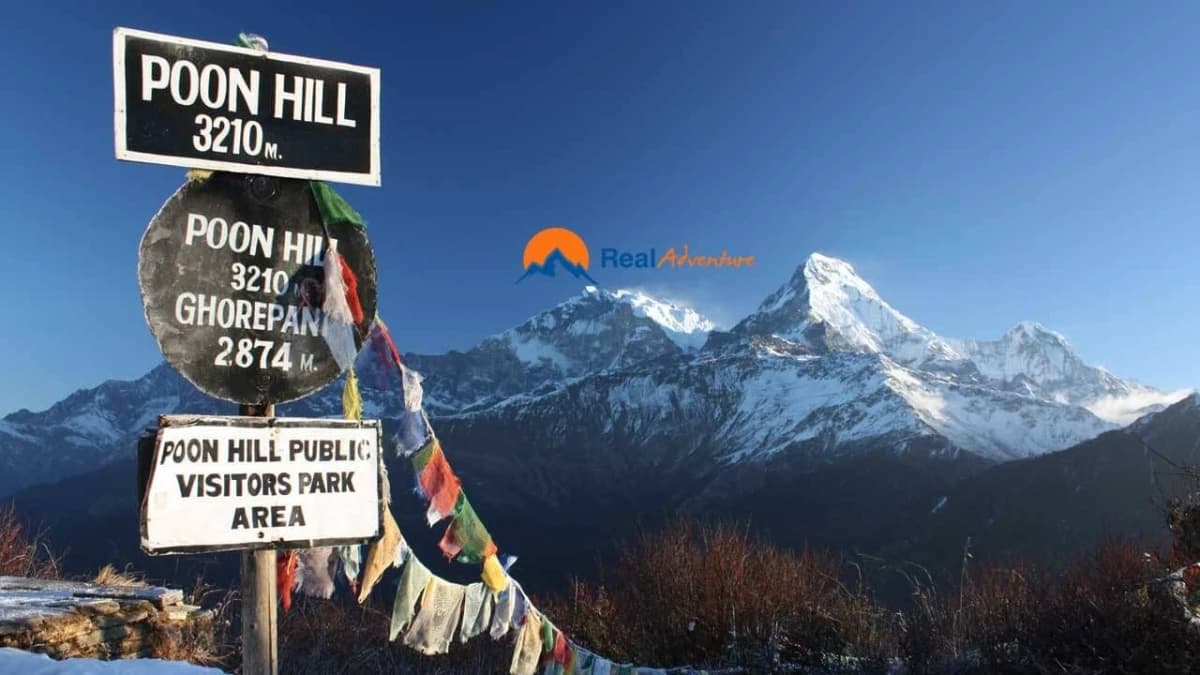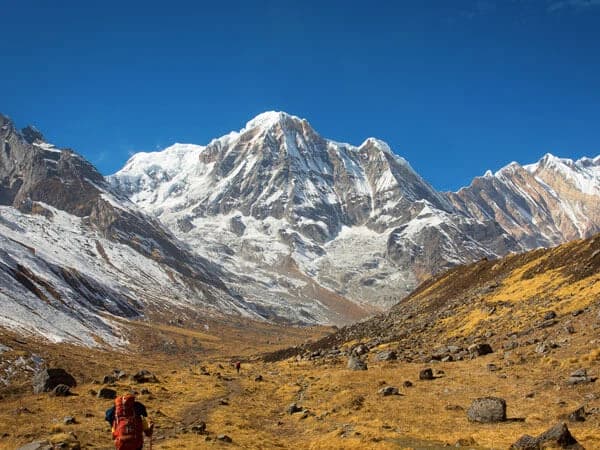17 Days ABC Trek with Poon Hill and Mardi Himal – A Scenic and Cultural Himalayan Adventure
The 17 Days ABC Trek with Poon Hill and Mardi Himal is one of the best multi-route treks in Nepal, offering the perfect mix of breathtaking landscapes, rich cultural experiences, and diverse trekking trails. Ideal for adventurers seeking both iconic and off-the-beaten-path experiences, this journey combines the classic Annapurna Base Camp Trek (ABC) with the panoramic vistas of Poon Hill and the serene trails of the Mardi Himal Trek. It is a top choice for those looking for a moderately challenging, scenic, and culturally enriching trek in the heart of the Annapurna Region.
This trekking package covers everything from rhododendron forests and traditional Gurung villages to dramatic mountain amphitheaters. The journey begins with the lush lowlands of the Annapurna foothills, leading through terraced farms, peaceful forests, and gradually ascending towards the glacial heart of the Himalayas. Unlike high-altitude treks such as the Everest Base Camp Trek, which are physically demanding due to thinner air and higher elevations, this route maintains a more moderate altitude profile, making it more accessible without compromising on adventure or views.
Annapurna Base Camp Trek – Iconic Mountain Landscapes
The Annapurna Base Camp Trek, the highlight of this journey, offers jaw-dropping views of some of the highest peaks in the world, including Annapurna I (8,091m), Machapuchare (Fishtail) and Hiunchuli. As you ascend towards the base camp at 4,130 meters, the trail takes you through the dramatic Modi Khola valley, flanked by towering snow-covered giants. The final approach to ABC is a stunning amphitheater of peaks that delivers one of the most rewarding panoramic mountain views in Nepal.
Poon Hill – Sunrise Over the Himalayas
Adding Poon Hill to this itinerary enhances the visual and cultural richness of the trek. Located near Ghorepani, Poon Hill is famous for its incredible sunrise views over the Dhaulagiri and Annapurna ranges. At 3,210 meters, this viewpoint is easily accessible and offers one of the most photogenic moments of any Himalayan trek. It's a favorite among photographers and nature lovers, making this section of the ABC Trek with Poon Hill and Mardi Himal a truly unforgettable highlight.
Mardi Himal Trek – Off-the-Beaten-Path Serenity
What makes this 17 days trekking holiday even more unique is the inclusion of the Mardi Himal Trek. This less-traveled trail leads you away from the busier paths of the Annapurna region and into a pristine environment of lush forests, narrow ridges, and high-altitude grazing meadows. The Mardi Himal Base Camp, located at 4,500 meters, offers spectacular close-up views of Machapuchare, which dominates the skyline. This part of the trek is perfect for those who want a quieter and more intimate experience with the mountains.
Culture, Challenge and Comfort
This carefully curated route strikes a perfect balance between cultural immersion and natural beauty. You will pass through traditional villages like Ghandruk, Chhomrong and Landruk, interacting with warm-hearted Gurung and Magar communities. Along the way, you’ll have the opportunity to experience local hospitality, Himalayan cuisine, and even traditional dances, enriching your journey with unforgettable cultural moments.
Although the trek includes some steep ascents and descents, it is considered less strenuous than treks to Everest Base Camp, making it ideal for fit beginners and experienced trekkers alike. The acclimatization-friendly route and flexible pace allow you to enjoy every moment without undue physical strain.
The Ultimate Annapurna Trekking Experience
If you're searching for the best Trekking in Annapurna, this combination of the ABC Trek with Poon Hill and Mardi Himal delivers a comprehensive and scenic experience. It’s a top-ranking trek packages because it covers all the best features of the Annapurna region in one unforgettable itinerary. From Himalayan sunrise views to quiet forest paths and iconic base camps, it truly is the ultimate trekking holiday in Nepal.
Whether you’re a first-time visitor or a seasoned trekker, this 17 days adventure offers the perfect mix of beauty, tranquility, and thrill—making it one of the most sought-after trekking packages in Nepal today.
Trip Highlights
- Enjoy the breathtaking views of snow-capped Annapurna and Dhaulagiri ranges at sunrise from Poon Hill.
- Experience the hidden beauty of Mardi Hill on the quiet and relaxing Mardi Himal Trek.
- Visit adorable local communities, learning about the beautiful cultures of the Gurung and Magar people.
- Climb to the splendid Annapurna Base Camp (ABC), located at 4,130 meters east-west and surrounded by remarkable mountains.
- Experience a variety of terrains, starting from dense forests to rocky high alpine meadows, by enjoying the best of both the Poon Hill Trek and the Mardi Himal Trek.
- Experience a journey full of excitement and peace with the complete ABC Trek with Poon Hill and Mardi Himal (17-day map).
- A well-budgeted and organized expedition, with the Mardi Himal Trek.
- The ABC Trek with Poon Hill and Mardi Himal (17 days) price is very reasonable for this excellent multi-countries trekking.
Trek’s Route Map
The ABC Trek with Poon Hill and Mardi Himal trek map consists of exciting and varied terrain and includes one of the most popular routes for trekking in Nepal. It begins at Nayapul and afterwards ascends to Poon Hill, from where the breathtaking scenes of sunrise over the Himalayas can be witnessed.
From there, trekking leads to Annapurna Base Camp (ABC) and then to the off-beaten trails of Mardi Himal. The large and intricately detailed Mardi Base Camp trek map helps you find your way while enjoying the beaten and the less-beaten paths.








